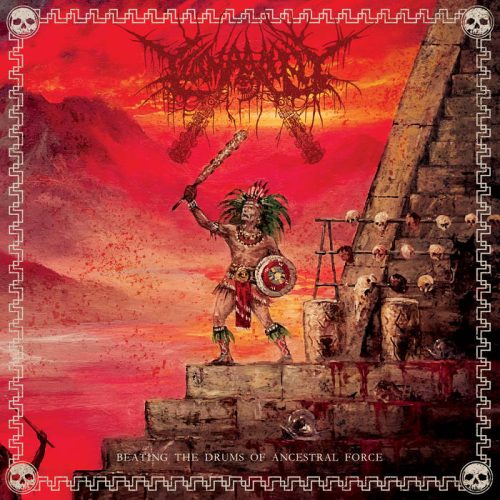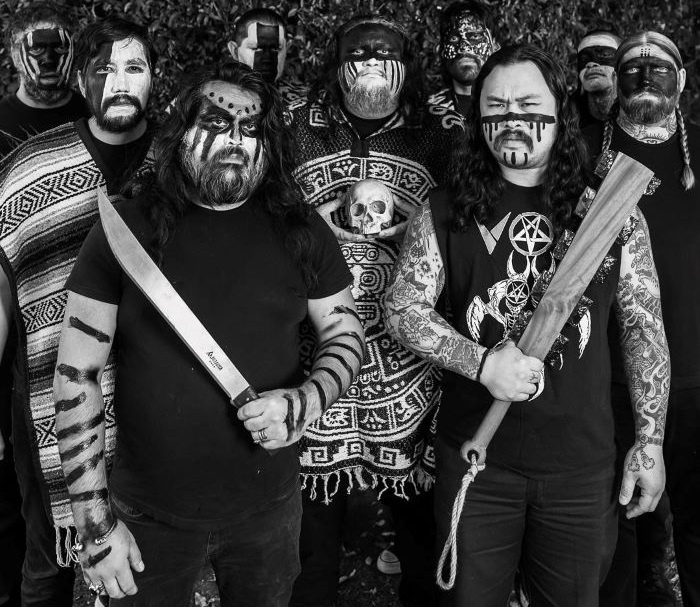
(Andy Synn beats the drum for the upcoming new album from Tzompantli, out next week)
A great many people have spent a lot of time arguing, both online and off, about the answer to one of life’s most fundamental questions.
Namely, “what is heavy?”
Some people say it’s chunky chugginess or pounding, pneumatic rhythms, while others will point to chordal density, or claustrophobic atmosphere, or even pure emotion, as the true source of “heaviness”.
But, as it turns out, the answer is far, far simpler than that – the answer is Tzompantli.
Tzompantli are heavy.

Bigger, better, burlier… and, yes, heavier… than their debut, Beating the Drums of Ancestral Force suggests that the Tzompantli tribe haven’t just been hitting the metaphorical gym in between albums, they’ve basically been mainlining human growth hormone directly from the source (just don’t ask how they got it).
But while we’ve established that Tzompantli are heavy – and just one listen to the high-intensity churn ‘n’ burn of opener “Tetzahuitl” should be more than enough to confirm that – they also have more than just sheer sonic weight to offer.
Take the morbidly infectious, Monotheist-esque mix of malice and misery that makes up “Tlayohuali” – whose central melodic refrain will likely continue to haunt you long after the song has ended – or the ritualistic vibes of “Tlaloc Icuic”, both of which demonstrate that the band’s sound isn’t just sticking to the same well-worn paths but has instead expanded to explore even more musical territory than before.
Of course, you’re rarely far from another punishing passage of absolutely monstrous heaviness – “Chichimecatl” is basically just five minutes of bone-grinding brutality and gut-churning gutturality, interwoven with a series of tortured tremolo melodies, while the primal percussive patterns propelling “Tetzaviztli” build towards a truly colossal, doom-laden conclusion – but the band’s willingness to dig that little bit deeper, into both their creative influences and cultural identity, speaks volumes about their increased confidence this time around.
This is even more apparent during the album’s fantastic, nine-minute finale “Icnocuicatl”, which shifts the focus firmly towards the “Doom” side of the band’s Death/Doom sound, going as far as to incorporate passages of moody minimalism and solemn clean-singing alongside surges of gargantuan guitars and grisly growls, allowing Tzompantli to push the extremes – at both ends of the scale – in a way which they would never have dared to attempt before now.
Make no mistake about it, Tzompantli are most definitely channelling ancestral forces here, and when the end of year accounting is all done I’m confident that their body-count – heads taken and hearts stolen – will be higher than most of their peers combined.
